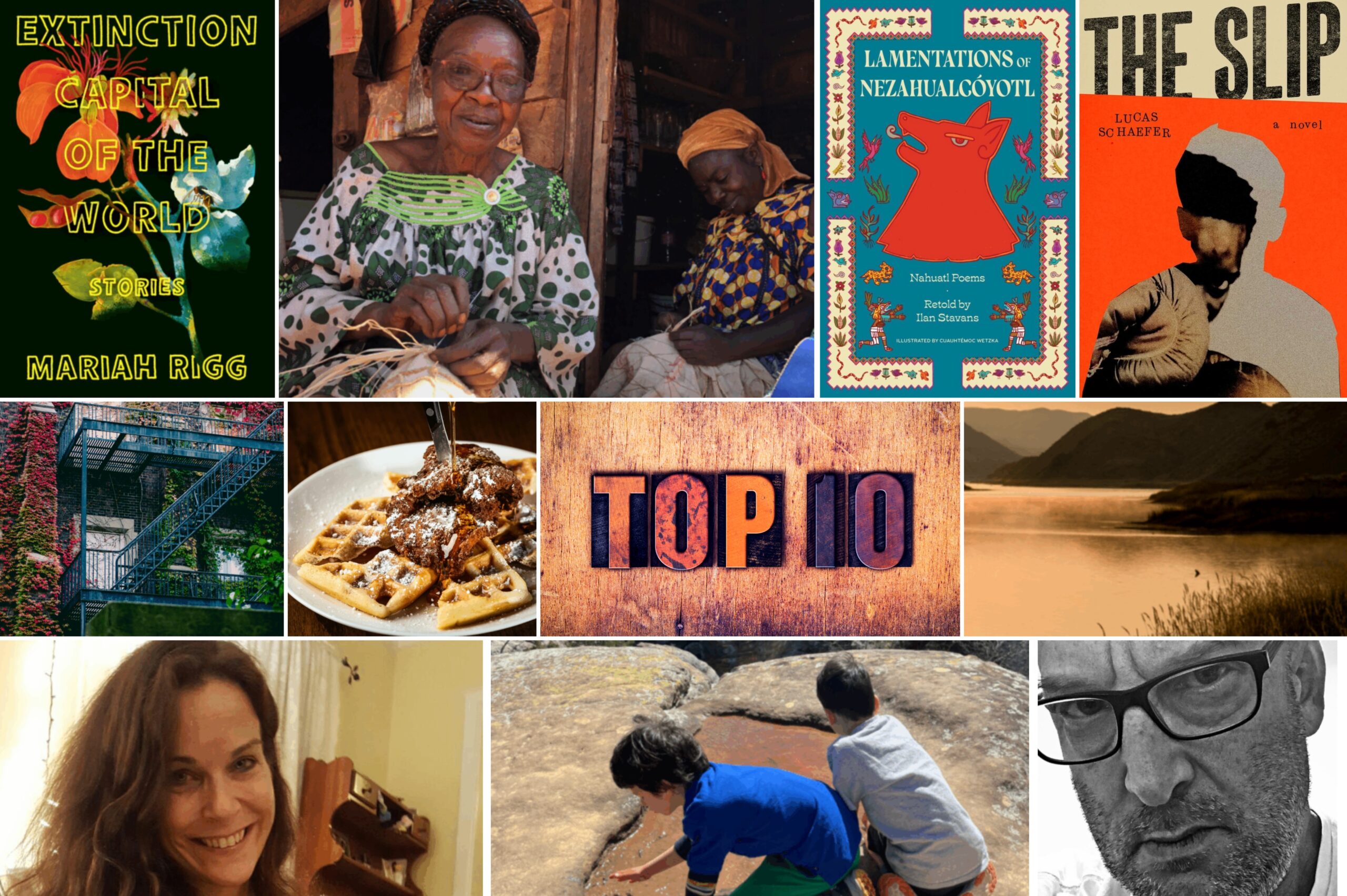
Issue 26 launches on November 6, 2023
Click here to purchase your print or digital copy, starting at just $8.
After November 6, browse the Table of Contents, including online exclusives, at thecommononline.org/issues/issue-26.
Love Issue 26’s portfolio of writing from the farmworker community? Donate to support The Common’s mission to feature new and underrepresented voices from around the world.
Interested in teaching Issue 26 in your class? Click here to explore your options and resources.
About Issue 26
From the Farmworker Community
Half of our fall issue is dedicated to a portfolio of writing and art from the farmworker community: over a hundred pages filled with the stories, essays, poems, and artwork of immigrant agricultural workers.
The portfolio, co-edited by Miguel M. Morales, highlights the work of twenty-seven contributors with roots in this community. Most started work in the fields as children, and the portfolio reflects their diverse experiences—the long hours and low pay, protests and picket lines, but also the fierce resilience of their families, the warmth of their communities, and the satisfaction of doing hard work well, among friends and loved ones. Pieces in the portfolio consider decades of migrant and immigrant farmwork in the US, from the braceros to the current day, and experiences from picking berries to hauling cattle. Many writers reflect on the generational divides in their families, the complex relationships that can arise when parents work hard to get their families “out of the fields,” and, in succeeding, raise children very different from themselves. Stories and poems highlight youthful queer experiences, and essays explore the way modern agriculture is changing, and the lives of farmworkers with it.
The portfolio features stunning full-color artwork by Narsiso Martinez, who creates moving portraits and scenes of farmworkers in the fields, painted on flattened cardboard produce boxes. Portfolio co-editor Miguel M. Morales’s poem “Sisters” opens with a tender recollection of the integral and varied roles women play in shaping farming communities. The migrant labor camp becomes a vivid site of love and violence in Helena María Viramontes’s “The Fields of 1936,” as she juxtaposes material harshness with emotional tenderness.
Several pieces deal directly with labor organizing. In her essay “California Obscura,” Anna Mei Kim maps the topography of labor abuse and resistance in Southern California through the story of her family’s produce stand. Aideed Medina, who self-describes as a “daughter of the United Farm Workers’ movement,” shares three bilingual poems on the inventive paths labor finds to dignity. In “Jacinta Murrieta,” Julio Puente Garcia tells the tale of the eponymous Jacinta, a mythic martyr figure for the disparate farmworker communities of central California. The story is translated from the original Spanish by The Common’s editor in chief Jennifer Acker.
2022 National Book Award Finalist Allison Adelle Hedge Coke considers displacement and adaptation in three evocative poems that depict moments of peace and liminality during migrant journeys. Oswaldo Vargas’s poem “Thresher Days” and Leo Rios’s queer love story “Lencho” likewise grasp at moments of innocence, attraction, and togetherness amid transience. Nora Rodriguez Camagna closes out the portfolio with “Boysenberry Girls,” an essay that insists on the power of familial love, across generations, to build a better life from the everyday hardship of farmwork.
From Around the World
Issue 26 includes three additional pieces of fiction, all of which explore the ways that place molds relationships. Nayereh Doosti’s “The Little One” shows the unfolding of intergenerational fractures from the perspective of an Iranian grandfather and the bond he forms with his infant granddaughter, born in America. In Sebastian Romero’s “Transgressions,” readers can consider how presence and memory blur together when a group of college friends returns to a Chicago bathhouse. O. Henry Prize-winner Amar Mitra’s “The Substitute,” translated by Anish Gupta, illuminates the dynamics of identification and mimesis in a close-knit Kolkata community through the form of an unsettling fable.
Issue 26 is dedicated to David Applefield, a literary polymath who shared The Common’s mission to publish international and emerging writers. Sam Spratford, The Common’s inaugural Applefield Fellow, surveys Applefield’s impressive contributions to the literary world in the issue’s opening essay. In Vix Guttierez’s haunting essay, “Don’t Step Off the Path,” the author recounts her nomadic childhood amid the 1990s breakdown of Yugoslavia and the entanglement of war and sexual violence.
Finally, The Common brings readers a varied and evocative selection of poetry. Virginia Konchan invokes musical and religious symbols in three soul-searching contributions. David Lehman, founder and editor of the Best American Poetry series, is transported through time and space by a radio broadcast in “The Last Day of February.” Whiting Award-winner Rickey Laurentiis negotiates her Blackness and transness as she moves through Palestinian checkpoints; her verse in “Tall Lyric for Palestine (Or, The Harder Thinking)” is broken into a list, mirroring these fractured spaces. Issue 26 also includes the DISQUIET Prize-winning poem “The Gardener” by Joshua Burton, in addition to poems by R. Zamora Linmark, Julia Lisella, and Oksana Maksymchuk.




